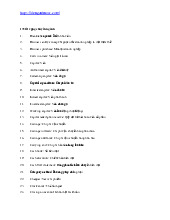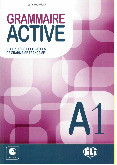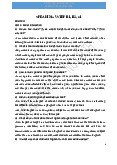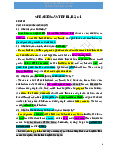

Preview text:
A Realistic Way to Curb (hạn chế /kɜː Carbon Emissions? b/) Kaitlyn Wampler Monday July 22, 2019
On March 31, 2015, the United States reported to the United Nations Framework
Convention on Climate Change (UNFCCC) (Công ước khung Liên Hợp Quốc
về Biến đổi Khí hậu) its Intended Nationally Determined Contribution (INDC)
(Đóng góp dự kiến do quốc gia xác định) to the reduction of
global carbon emissions. With its declaration (lời tuyên bố / dek.lə ˌ ˈre . ɪ ʃən/), the
US committed (cam
kết) itself to decreasing its carbon emissions by 26-28
percent of its 2005 levels by the year 2025.
Five years remain on that commitment, and the US House and Senate still disagree
on decisive actions to curb US CO2 emissions.
But a solution exists that’s proven to reduce emissions, is supported by economists, and that
has bipartisan (thuộc về hai đảng / ba ˌ ɪ ˈp .t ɑː .zæn/) ɪ
support. It’s called a carbon tax (thuế carbon).
How does it work?
The principle is simple: charge people to pollute.
A carbon tax adds a fee to carbon-based fuels like coal, oil, and gas at their source, either at the point of or on import. extraction (khai thác)
Because companies will pay the primary tax, industries that still rely heavily on
carbon-based fuels will be the first to bear (chịu /beər/) the weight of increased
fuel prices. Then, to maintain their profit margins (tỷ suất lợi nhuận), companies
will raise prices on their high-emissions goods and services proportional (tỷ lệ thuận /prəˈp .
ɔː ʃən.əl/) to the cost of fuel.
Since the prices on goods and services will increase proportionally to the amount
of fuel consumed in their production, products that emit large amounts of CO2 will
increase in price according to how much pollution they create.
How does that help reduce emissions?
It might sound dangerous to raise taxes. But, counterintuitively (ngược lại / ˌka n.tər ʊ . n ɪ t ˈ u ʃ . ː .t
ɪ ɪv.li/), more expensive goods are actually a good thing. Choice is the key word.
If high-emissions goods become more expensive and low-emissions goods stay the
same, shoppers will naturally choose the less expensive product. So, by raising the
cost of high-emissions products, we incentivize (khuyến khích / n ɪ sen.t ˈ .va ɪ ɪz/)
shoppers to buy from businesses that use green energy and that have a
lower carbon footprint.
By empowering (trao quyền / m ɪ pa ˈ ə
ʊ r/) people with a choice, we let
the free market (thị trường tự do) work as it should. We equip individuals to
take agency (quyền tự quyết) to build an economy in their community that favors
clean energy and helps the US meet its INDC.
Do we have proof?
To see that a carbon tax works, the US need only look to the policies of several
countries that have already implemented (thi hành) their own version of a carbon tax.
Sweden, for example, instated (đưa ra / n
ɪ ˈsteɪt/) its carbon pricing in 1990 and
has seen huge growth in their biomass (sinh khối / ba ˈ .ə
ɪ ʊˌmæs/) and biofuel
(nhiên liệu sinh học) industries since. The UK established a tax in 2013, and the
trend in their carbon emissions has already decreased sharply. Australia likewise
implemented a temporary carbon tax and saw a decrease in CO2 emissions in just
that time. Two years later, the tax was repealed (hủy bỏ /rɪˈpiːl/), and emissions
began rising again almost immediately.
Following the examples of Sweden and the UK, and learning from Australia, the
United States can take decisive action with a carbon tax that will both reduce its
carbon emissions and fulfill its commitment to the UNFCCC.
By implementing a carbon tax, the US can build a cleaner economy, meet its
emissions reduction goals, and put the power of choice back in people’s hands.
(Nguồn Enews, A Realistic Way to Curb Carbon Emissions)




